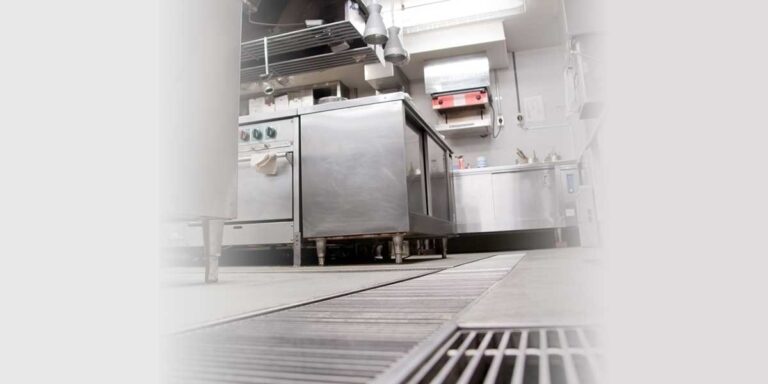One of the many challenges facing the hospitality industry is customer confidence. Guests need to feel safe when going out for dinner and drinks, or when staying in a hotel. So finding solutions which provide customers with peace of mind is essential to the future success and survival of your business.
Air quality has become an increasing concern for venues. Even with regular, stringent cleaning, harmful bacteria, viruses and sources of infection can still collect on surfaces. These invisible threats put you, your staff and customers at risk. Bacteria also shortens the lifespan of fresh produce, resulting in food wastage and extra costs to replace ingredients. As a result, many business owners in the hospitality industry are looking for a long-term solution to improve air quality. And many are turning to ozone generators or fogging machines as the answer.
What is an ozone generator used for?
Ozone generators are marketed as an effective way to eradicate air pollution and odours indoors, but it’s important to note that these devices can produce high levels of ozone gas.
Ozone can be used as a powerful disinfectant to kill viruses and bacteria. This makes ozone generators popular in medical environments where they can be used to clean hospital rooms or disinfect laundry.
In a hospitality setting, manufacturers claim that ozone generators can eradicate kitchen and bathroom smells, while also sanitising food preparation and storage areas. For restaurant, bar and hotel managers, ozone generators can seem like an effective weapon in the fight against bacteria and viruses. But the high levels of ozone gas produced by these machines makes them unsuitable for use in food service areas, or continuously occupied areas of a venue.
Why you shouldn’t use ozone generators for air cleaning in hospitality
Although ozone generators are promoted as a safe solution for indoor air pollution, it is recommended that people avoid being exposed to high levels of ozone gas. The World Health Organisation (WHO) recommends that ozone levels in areas of continuous occupation do not exceed 0.05ppm. If you do choose to use an ozone generator, it is therefore important to prevent staff from being able to walk into the room whilst the machine is in operation.
Evidence shows that the level of ozone that is safe to breathe would be unlikely to be effective, as a single solution, in tackling airborne bacteria, viruses or sources of infection. The HSE UK (COSH) short-term workplace exposure limit is 0.2ppm in air averaged over a 15-minute reference period.
Another drawback of ozone generators in a hospitality setting is that the room being targeted must be vacant during and after cleaning, and well-ventilated afterwards. During this time, the kitchen, bar, dining area or hotel room you are treating will be out of use, creating costly downtime. To maintain a safe level of gas, ozone generators can’t be used continuously either, meaning they don’t offer round-the-clock protection from bacteria and viruses.
What is a fogging machine used for?
Fogging machines, or disinfectant foggers, have grown in popularity as businesses invest in more stringent health and cleaning protocols. These machines disperse a fine mist of disinfectant solution to purify the air and any surfaces within a room, with the aim of eliminating harmful bacteria. It is claimed that fogging machines are particularly effective at combating airborne pathogens or viruses transmitted in respiratory droplets, including the flu virus.
Marketed as a way to quickly sanitise a room and its surfaces, some manufacturers also claim that their fogging machines can destroy 99.9% of harmful airborne bacteria and infectious organisms. But is a disinfectant fogger the right choice for your foodservice venue?
Why you shouldn’t use fogging machines for air cleaning in hospitality
Although fogging machines are promoted as offering a speedy solution to air cleaning, they are in fact time-consuming to use. Because of the nature of the disinfectants used in fogging machines, enclosed spaces need to be sealed off during and after treatment to reduce the risk of inhalation.
After treatment, the area will need thoroughly airing before it can be opened for use. It can take an hour or more for the disinfectant mist to dissipate and the air to become breathable again. This can leave key areas of a venue out of action for a prolonged period, adversely affecting business.
Fogging machines are also manually operated, requiring someone to operate the fogger by hand. The operator will need to wear appropriate PPE, covering their hands and eyes and using a respirator. The manpower and protective equipment required to use a fogging machine makes them a less efficient and potentially more expensive solution for air cleaning.
This can bring such a time consuming process into question since it only takes eight hours for a single bacterial cell to multiply to over 8 million. It could strongly be argued that the cost and effort outweigh the benefits as contamination can occur so quickly after the cumbersome procedure.
What are some better solutions?
Air sanitisers/sanitisers can offer a safer and more reliable alternative to high level ozone generators or fogging machines, but it’s always important to look at products at an individual level, as there are many different alternatives under this umbrella.
What we are talking about here are air and surface sanitisers that target airborne bacteria and viruses by sanitising the air, such as our HyGenikx range.
The Mechline HyGenikx air and surface sanitisation system uses a unique combination of UVC, PCO and trace ozone to tackle harmful bacteria and viruses, greatly reducing the risk of infection. Unlike ozone generators, HyGenikx only produces a very small volume of ozone gas, which is released as a by-product of the combination of technologies found in the device. The ozone levels present fall far below the lowest safe levels as stipulated by the European Ozone Trade Association (EUOTA) which means it can be used continuously, providing constant protection, and can also be used in occupied areas.
This means that a room can remain operational while cleaning is in progress, with no impact on business. Once activated, these devices work continuously to eliminate harmful bacteria from the air and surfaces. This offers round-the-clock protection for your premises, without the need for manual treatment.
Most importantly, HyGenikx is safe to use and non-toxic to both humans and pets, and doesn’t cause damage to the environment. So you can give your guests added peace of mind when dining, drinking or staying at your venue, with a solution that’s safe and long-lasting.
If you are a business owner in the hospitality industry, HyGenikx will help support the future success of your venue by offering reassurance to your patrons. Restaurant owners can explore the benefits of air sanitisers/sanitisers in more detail here, and discover how HyGenikx could make your eatery safer. Learn more about the HyGenikx system.
To learn more about how to improve efficiency of your restaurant click below.








